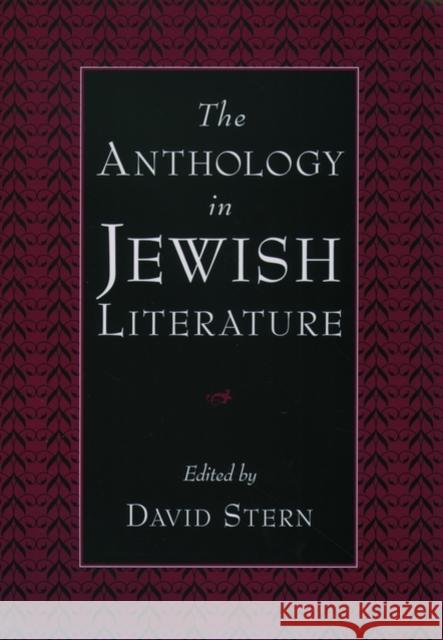The Anthology in Jewish Literature » książka
The Anthology in Jewish Literature
ISBN-13: 9780195137514 / Angielski / Twarda / 2004 / 360 str.
The anthology is a ubiquitous presence in Jewish literature--arguably its oldest literary genre, going back to the Bible itself, and including nearly all the canonical texts of Judaism: the Mishnah, the Talmud, classical midrash, and the prayerbook. In the Middle Ages, the anthology became the primary medium in Jewish culture for recording stories, poems, and interpretations of classical texts. In modernity, the genre is transformed into a decisive instrument for cultural retrieval and re-creation, especially in works of the Zionist project and in modern Yiddish and Hebrew literature. No less importantly, the anthology has played an indispensable role in the creation of significant fields of research in Jewish studies, including Hebrew poetry, folklore, and popular culture. This volume is the first book to bring together scholarly and critical essays that investigate the anthological character of these works and what might be called the "anthological habit" in Jewish literary culture--the tendency and proclivity for gathering together discrete, sometimes conflicting traditions and stories, and preserving them side by side as though there were no difference, conflict, or ambiguity between them. Indeed, The Anthology in Jewish Literature is the first book to recognize this habit and genre as one of the formative categories in Jewish literature and to investigate its manifold roles. The seventeen essays, each of which focuses on a specific literary work, many of them the great classics of Jewish tradition, consider such questions as: What are the many types of anthologies? How have anthologists, editors, even printers of anthologies been creative shapers of Jewish tradition and culture? What can we learn from their editorial practices? How have politics, gender, and class figured into the making of anthologies? What determinative role has the anthology played in creating the Jewish canon? How has the anthology served, especially in the modern period, to create and recreate Jewish culture. This landmark volume will interest educated laypersons as well as scholars in all areas of Jewish literature and culture, as well as students of world literature and cultural studies.











